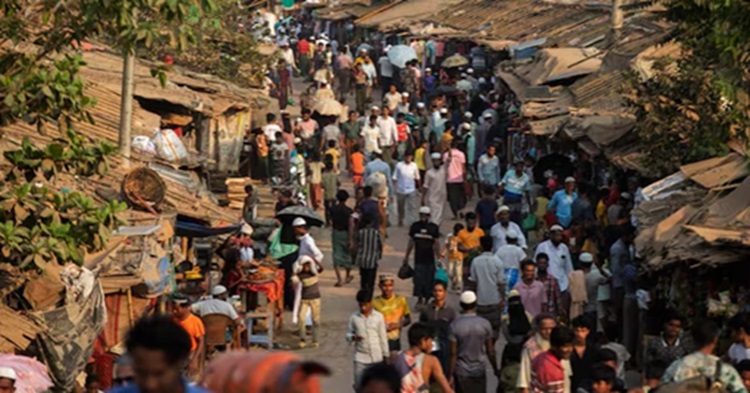The Human Face of International Migration: Stories, Struggles, and Statistics


International migration isn't just a global statistic; it's the raw pulse of human stories, sparked by fragile dreams of safety, prosperity, or family reunions, yet so often crushed under waves of heartbreak and hardship no one deserves.
As of mid-2024, the latest UN figures peg the global international migrant stock at 304 million people, about 3.7% of the world's population, each one shouldering a personal saga of bravery, grief, and quiet resilience.
These aren't faceless numbers; they're people like Ibtihal from Syria, who fled war in 2013 with her husband and five kids to Jordan, scraping by for over a decade before returning in 2025 to a ruined home that brought tears of joy and sorrow, as she whispered, "Life is truly painful." Or Harjit Singh from India's Punjab, who pawned family land for an $80,000 smuggling trek to the US, enduring jungles and detention only to be deported in debt, confessing, "I am broken inside… I don't see a future." And Maawia Alhassan from Sudan, a once-thriving shop owner who lost everything in 2023's conflict, fleeing alone to Uganda while agonizing over his missing wife and kids, holding on as he says, "The pain is immense, but I haven’t given up."
Top Countries Hosting and Sending International Migrants
You know how migration really works? It's not this neat little diagram; it's all over the place, with people heading out for decent work, dodging wars, coping with crazy climate stuff, or just holding onto family connections. The UN's newest numbers, fresh from their 2024 update that dropped in early 2025, have the total international migrants jumping from 275 million in 2020 up to 304 million by mid-2024, mostly because of big displacements and spots crying out for extra hands on deck.
Primary Host Nations: Havens Amid Strain
Host countries provide refuge and opportunity, but often at a cost to both newcomers and locals. The United States, home to over 52 million migrants, exemplifies this duality. Immigrants fuel innovation and growth, yet many, like undocumented farmworkers, toil in fields under harsh conditions, their contributions vital yet undervalued. Germany, with its welcoming policies, hosts millions fleeing conflict, but integration stories reveal struggles, such as language barriers that leave families feeling adrift.
Table: Here are the top 10 host countries, based on UN data for 2024.
| Rank | Country | Migrant Stock (millions) |
| 1 | United States | 52.4 |
| 2 | Germany | 16.8 |
| 3 | Saudi Arabia | 13.7 |
| 4 | Russia | 12.0 |
| 5 | United Kingdom | 9.6 |
| 6 | United Arab Emirates | 8.8 |
| 7 | France | 8.5 |
| 8 | Canada | 8.0 |
| 9 | Australia | 7.7 |
| 10 | Italy | 6.4 |
In Gulf states like the UAE, migrants from South Asia build skyscrapers but often face exploitative labor practices, their passports confiscated, binding them like modern-day indentured servants.
Leading Countries of Origin: Roots of Departure
Origin countries lose talent and youth, yet gain through remittances that sustain economies. India leads, with 18.5 million emigrants whose journeys are laced with sacrifice, think of Priya, a nurse in the UK, video-calling her children nightly, her heart torn between duty and longing.
The top 10 origin countries in 2024:
| Rank | Country | Emigrants (millions) |
| 1 | India | 18.5 |
| 2 | Mexico | 12.0 |
| 3 | China | 11.7 |
| 4 | Russia | 10.5 |
| 5 | Syria | 8.2 |
| 6 | Philippines | 6.5 |
| 7 | Ukraine | 6.0 |
| 8 | Bangladesh | 5.5 |
| 9 | Pakistan | 5.0 |
| 10 | Afghanistan | 4.8 |
Remittances reached $685 billion to low- and middle-income countries in 2024, often outpacing aid and investment, funding school fees and medical bills that keep families afloat.
Safeguarding Dignity: International Migration Law
Look, at the heart of it, international migration law is supposed to be this big promise, a real commitment from the world to look out for folks who are at their most vulnerable, crossing borders out of sheer necessity. Take the 1951 Refugee Convention, which has been signed on by 149 countries now; it's all about shielding people running from persecution, with that key rule of non-refoulement to stop anyone from being sent back into harm's way.
Then there's the 1990 Migrant Workers Convention, pushing for basics like fair pay and keeping families together, but honestly, only 60 nations have gotten on board, which leaves huge holes where exploitation just slips right through. You've got those anti-trafficking and anti-smuggling protocols tied to the UN's Palermo Convention from 2000, meant to crack down on the nasty rings that prey on migrants, but enforcement?
It often crumbles in places riddled with corruption, even though the trafficking one has 182 parties and smuggling around 151. And the 2018 Global Compact for Migration tries to get everyone working together better, but since it's not legally binding, it just points out how much more we need real, enforceable solidarity across the board. For the people out there risking deserts or rough seas, these rules could literally be the line between making it or total despair, yet the spotty way they're applied? It feels like we're all falling short on actually living up to our shared human decency.
The Weight of Survival: Migrants' Daily Struggles and Mental Toll
Being a migrant often means gritting your teeth through this quiet, grinding endurance, where those flickers of hope smack right up against some brutal everyday realities. Picture families crammed into rickety camps or city slums, battling everything from floods to sickness, take Venezuelan moms in Colombia, like those scraping by in border towns amid a "silent emergency," dodging poverty and violence while shielding their kids from pouring rain and hunger, as aid dries up and no one's ready for another wave.
Exploitation's everywhere you turn: workers get shortchanged on pay, put up with abuse, and clock endless hours with no real backup, like the temporary foreign folks in Canada's farms facing straight-up wage theft, racist slurs, and violence, all baked into a system that's been called "inherently exploitative.
The mental side hits hardest, though – with all that trauma, loneliness, and never knowing what next fuelling spikes in anxiety, depression, and PTSD. Fresh WHO stats from 2025 show these issues cropping up way more in refugees and migrants than locals, made worse by stuff like detention or dragged-out policies that leave people in limbo. A recent study on Bangladeshi migrants nailed it, highlighting how they're hit with "social isolation, workplace exploitation, discrimination, and financial insecurity", their minds weighed down by constant worry for family back home.
But even in the thick of it, you see these sparks of toughness – little acts like neighbours sharing a meal or support groups pulling together – that remind you how unbreakable the human spirit can be.
The Shadow of Corruption: How It Entangles Migrants
Corruption poisons migration at every stage, turning desperation into profit. In origin nations, graft siphons resources, compelling departures, and smugglers bribe officials, with reports indicating over half involve payoffs to evade borders.
A 2025 UNODC report highlights how organised crime adapts, using digital tools for trafficking, while border corruption in regions like the Western Balkans enables illicit flows. Migrants pay dearly for bribes for visas or silence abuse, trapping them in cycles of debt and fear.
IOM's 2025 appeal calls for combating these networks, as corrupt officials divert aid, leaving refugees like the Rohingya even more exposed. Breaking this requires transparency, but for now, it remains a shadow over countless lives.
Spotlight on Suffering: The Rohingya and Other Communities
The Rohingya mess is like the ultimate gut-punch example of what migration gone wrong looks like: folks chased from their homes by hatred, landing in places that barely hold together. Just this July 2025, with fighting flaring up again in Myanmar's Rakhine state, another 150,000 Rohingya have bolted to Bangladesh, pushing the massive Cox's Bazar camps past the 1 million mark.
Life is no picnic: monsoons wipe out those flimsy bamboo huts, gang-like violence is spiking inside the camps, and aid money's drying up fast, leaving families scrounging for meals and jumping at shadows. One young woman, Lucky Karim, who was just 14 when she fled the genocide back in 2017, put it raw: "Work with us, not just for us"—hitting on how these refugees, mostly women and kids making up over half the crowd, are battling trafficking, abuse, and the daily grind, yet still pushing for a say in their own futures.
You hear the same kind of echoes from Ukrainian refugees scattered across Europe, still nursing those deep war wounds three years in, over 5 million of them as of May 2025, with the EU extending protections till 2027, but support starting to waver as folks grapple with PTSD and rebuilding shattered lives. Or take Haitian migrants pouring into the Americas, dodging brutal gangs that killed over 3,000 in the first half of 2025 alone, only to hit walls of deportation threats and ugly stigma, like the panic gripping communities now with talk of mass removals under new policies. These aren't just headlines; they're real lives that put a face on the numbers, begging us to choose kindness over slamming doors.
With 304 million migrants out there facing all kinds of uncertainty, we've got to step up those protections, smash the corruption rotting the system, and tackle the deep roots like poverty and conflict head-on. By really taking in stories like Ibtihal's bittersweet return, Harjit's heartbreak, Maawia's grit, or Priya's torn heart, we can shape a world where migration's about choosing a better path, not running for your life, reminding us we're all connected in this big human story.
